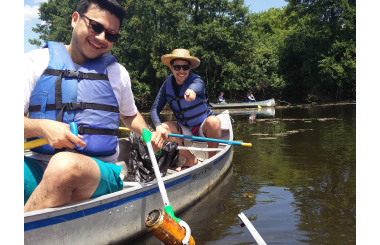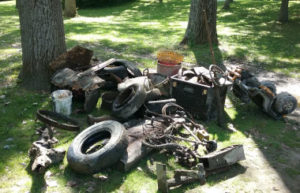You can protect the Huron River anytime you are out by doing a DIY or group River Cleanup!
 Picking up trash in the river and along the shore helps keep the Huron and its tributaries healthy and safe for people and wildlife. You can do a river cleanup on the water or from the shore. Head out and spend an afternoon on the river – trash bag in hand!
Picking up trash in the river and along the shore helps keep the Huron and its tributaries healthy and safe for people and wildlife. You can do a river cleanup on the water or from the shore. Head out and spend an afternoon on the river – trash bag in hand!
We want to know if you are a DIY hero. Before you head out, please register your DIY event:
Planning a Cleanup? Let us know!




